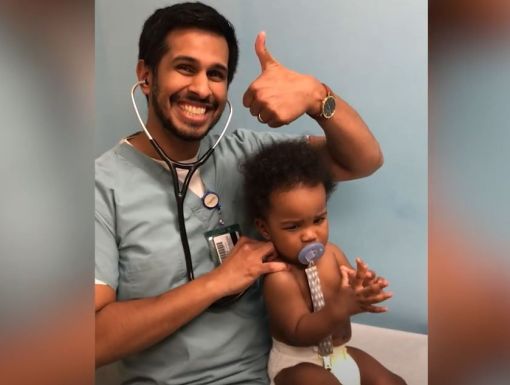
What Does the Appendix Do?
If you’re like most people, you’ve heard of appendicitis. You may know a friend or relative who had emergency surgery for appendicitis. You may have even had it yourself. What you may not know is how can a little organ stir up so much trouble.
You may wonder: What does the appendix do? Why does it become inflamed? Can a person live without an appendix? We’ve got answers.
What side is your appendix on? Where is the appendix?
The appendix is a small organ that is attached to the large intestine (also known as the colon). In most people, the junction of the small intestine and the colon is located in the right lower abdomen. The appendix hangs off the colon right near that junction. It typically measures about 3 inches in length.
What does your appendix do?
For many years, the appendix was considered a “vestigial” organ, meaning it is a remnant of development and evolution that serves little purpose. It is part of the GI tract but has had no digestive role. Many recent studies have questioned its purpose. Recent research has shown that the appendix has a high level of lymphoid tissue to help fight germs, and it even has its own microbiome, which may affect how the body deals with germs.
What causes appendicitis?
The appendix is most famous for causing appendicitis, a condition characterized by inflammation and infection of the organ. Appendicitis can occur when the appendix, which is an “end organ” with only one point of drainage, becomes blocked. Blockage can be due to stool, swelling of the lymphatic tissue within the appendix, or much more rarely, by a tumor. A blocked appendix will swell and eventually rupture if not treated.
What does appendix pain feel like?
Appendicitis begins with pain as the organ swells. Pain often begins around the belly button. Within several hours of onset, pain will usually localize to the right lower abdomen. Young children may be unable to localize the pain. Pain can be followed by loss of appetite, nausea and sometimes vomiting. A child may walk hunched over and may grab his or her right lower abdomen in pain. He or she may not want to jump. A car ride may be uncomfortable. Fever and diarrhea are usually more delayed signs. Persistent pain warrants immediate medical attention. Early attention to symptoms for appendicitis is the best way to avoid rupture.
How is appendicitis diagnosed?
Diagnosis involves a combination of the medical history, vital signs, a physical exam and often blood tests and imaging. Ultrasound is the best first option for imaging as many children can be diagnosed with appendicitis without a CT scan.
How is appendicitis treated?
Appendicitis is a medical emergency. Surgery to remove the appendix is the mainstay of treatment for early appendicitis. In the surgery, the appendix is usually removed with a minimally invasive approach using laparoscopy. The surgery is common and can be done safely. If the appendix has not ruptured, many patients can go home right after the surgery. Children can usually return to school within a few days and can get back to sports within a few weeks.
Of note, a pediatric multi-institutional trial was performed to compare antibiotics alone versus appendectomy for treatment of early appendicitis. The success rate of non-operative management at one year was only 67%. We still recommend surgery for early appendicitis.
What causes the appendix to burst?
If left untreated, the appendix will rupture. When it ruptures, inflammation and infection are spread throughout the abdomen and can cause significant illness (and death if untreated). When a patient has a ruptured appendicitis, treatment can be complicated. The surgeon will decide between surgery versus antibiotics with or without drain placement. If the body has already formed an organized collection of pus known as an abscess, it can be safer to manage a patient without surgery. In that situation, an elective “interval” appendectomy is recommended at a later date to prevent recurrent appendicitis. Length of hospital stay is much longer for ruptured appendicitis and there are more potential complications.
How do patients do after an appendectomy?
Once patients have recovered the initial illness, they should return to their normal health. There are no studies to show long-term adverse outcomes after appendectomy. The large intestine and other areas of the gut continue to manage bacterial populations and immune responses effectively. The risk of complications from appendicitis clearly outweighs the benefits of keeping the appendix.
Final thoughts
The appendix may be small but can cause major illness if it becomes inflamed. It is important to recognize early symptoms of appendicitis and seek medical attention when abdominal pain persists. Ochsner’s pediatric team, including our pediatricians, pediatric surgeons and pediatric emergency room are all equipped and ready to evaluate your child should he or she develop concerning symptoms. We are all here to help.
Learn more about pediatric surgery at Ochsner.



